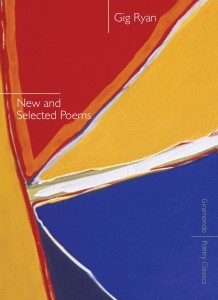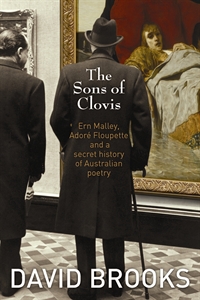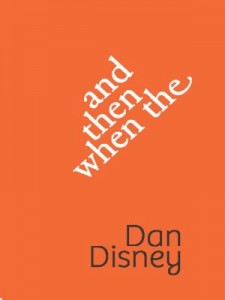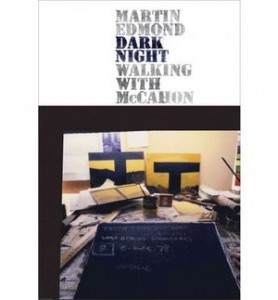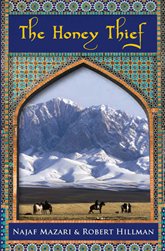PREFACE
By invitation this paper was presented at The Political Imagination, a Conference on Poetry held by in April 2012 at Monash and Deakin University co-ordinated by Dr Ali Alizadeh, Dr Ann Vickery and Professor Lyn McCredden. I wanted it to be considered for a journal of literary scholarship and so, after some consideration, I submitted it to an on-line refereed journal. Notwithstanding my independently-situated research the essay was returned to me within four days without readers’ reports and with the following comment:
Thank you for your submission to —-. After an initial read, the editors feel that —- isn’t the best match for your submission. Although very interesting and well-written, the piece would be better suited to a cultural studies or postcolonial theory journal. We do hope that you pursue publication with a different journal, one that could offer a better fit for your article. Thank you very much for your interest in contributing to —- .
This may be fortuitous as Mascara has, I suspect, a wider national readership than the journal in question. I don’t think the concerns this essay raises should be quarantined.
The Poetics of Subalternity
This essay attempts to assemble a radical critique of contemporary Australian literature, which in its orientation and its networks of power and interest inaugurates itself as a subject in the guise of nationalism while ignoring the divisions of cultural capital and labour. This is an exclusive and essentially White paradigm that articulates difference in Euro-Imperialist terms, elaborating discourses of difference, counter-narratives, multiculturalism, postcolonialism and non-determination while concealing its agency, its neo-colonisation and domination of Otherness. And by “Other” I am referring generally to those marginalised and disempowered by the narratives of Australian literature, history, law, political economy and adopted ideology (of the West, that is) and I am speaking as an Asian Australian writer unfortunately privy to the gatekeepers of Australian literary culture. I’ll have to ask you to indulge me in that my essay is an intentionally polemic commentary, embedded in a space I enter as a writer of colour, hybridity and Asian background rather than as Anglo-academic or cultural theorist. And I make this entreaty because in advancing my argument I am aware of causing dichotomies to arise within the trace of this text.
So how does the term “subalternity” come into all of this? I would like to argue that Spivakian subalternity emphasises the notions of economic disenfranchisement and how representation of such groups by the empowered intellectual West is co-opted into a cultural domination. I argue that this parallels our Australian postcolonial context with respect to how disenfranchised groups are being represented.
For instance Australian literary and specifically poetic representations of Asia are most frequently configured from European philosophical perspectives on ethnography, desire, grammatology, materiality etc. They may appropriate or fetishize Asian culture or themes as objects of knowledge. Some poetic representations are touristic or voyeuristic. Invariably they fail to articulate the complex sense of inheritance and belonging embodied in Asian-Australian identity. More broadly speaking, there is a lacuna in the representation of the Asian Australian presence in our literature across all genres. Relatively few numbers of Asian-Australians are being supported for cultural residencies through Asialink or indeed being nominated for awards or being reviewed in mainstream publications and journals. They are not able to hold the same expectations as their Anglo-Australian colleagues. Does this make them subaltern? No, that is not my point. Many of these imbalances reflect institutional legacies but they also constitute a covert discourse which privileges, in economic and cultural terms, coteries of race and class. Ouyang Yu’s essays on multiculturalism “Absence Asia: What’s Wrong With Australia?” first brought my attention to these alarming discrepancies. Yu’s oeuvre has since been absorbed into the postmodern mainstream, abetted by lines of patriarchal mobility and access denied to those marginalised.
So why have I chosen this seemingly obscure term? I turn to Spivak for three reasons. Firstly because she inspires me as a poet of philosophy and multi-lingual translator of Derrida, whose work in relativising the transcendental I deeply admire for its ethical applications and anti-logocentrism. Secondly because she is an engaged feminist who has critiqued the global alliance politics among women of dominant social and cultural groups, and thirdly because she is a diasporic South Asian; if not a Goan, she is a Bengali, so to reference her work opens up for me a transnational and interdisciplinary dialogue with which I can connect. Spivak provides us with a brilliant methodology, a set of analytic tools, to work towards the establishment of agency and the lines of mobility and to situate the body as the site of metonymy and resistance.
If we are to describe a poetics of subalternity we need to consider the various resonances of the term “subaltern”. The term was used by the Italian Marxist Antonio Gramsci as a synonym for subordination of the rural based southern Italian peasantry in his memoir Prison Notebooks, however translators point out that during Gramsci’s fascist incarceration, the term ‘subaltern’ was a code word for the Marxist term proletariat, and also that at times Gramsci uses the term to mean ‘instrumental’. If so this complicates the Marxist notion of the proletariat being revolutionary in character as a result of their economic conditions but it does invite an appreciation of the common nature of the subaltern, their intrinsic weaknesses and strengths. For the Subaltern Studies Collective, the term was used to describe a class or group of contingent militant activism which was heterogeneous and discontinuously organised compared to the more national agitation during anti-Partition and Independence resistance, yet who were unable to represent themselves in the elite historiography. Subaltern Studies historians point out that such a history is grounded in British colonial ideology. These historians, people like Guha and Chakrabarty, attempted to recuperate the consciousness and intent of the subaltern in a positivist way, and moreover they reframed the social and political changes, to quote Spivak:
“ in relation to histories of domination and exploitation rather than within the great modes-of-production narrative”
(CSS )
So while their postcolonial framework provides an interpretation that exceeds the Marxist modes of progression from feudalism to capitalism, Spivak critiques their discourse which she sees as “insidiously objectifying” the subaltern, thus positioning her inquiry in “Can the Subaltern Speak?”
But Spivak’s main concern is with the occlusions in political thinking by the Western male intellectual as proxy for the disempowered. Contentiously she critiques Deleuze and Foucault of being blind to the international division of labour. She critiques them for conflating the desire of the oppressed with the interests of the radical Western intellectual, thereby essentialising the concepts of power and desire to construct an undivided political subject “the oppressed who can know and speak for themselves.” She deconstructs representation, emphasising its double meaning, political representation being interdependent of aesthetic representation and she argues that it is from beyond both of these spaces that oppressed subjects speak, act and know for themselves. Now clearly a concept such as this has resonance with an Asian Australian poetics, which is a marginalised poetics. Apart from tokenism, what kind of endorsements or validity do these groups receive in terms of their political representation vis-a-vis other cultural subjects or agents? Aesthetic representation is related but not the same as its political counterpart. What are the obstructions and limitations being imposed upon us, and by who? Why are there only certain kinds of narratives being articulated and whose narratives are they? Who are the arbiters determining our cultural paradigms? How come our representing academics and creative writers remain so quarantined? Let’s stop to consider how many marginalised writers simply leave this country or become economically and physically exhausted, if not overwhelmed by insanity at the kind of indifference that their work receives. I’d like to suggest that this constitutes a form of epistemic violence, a set of pathologies imposed by neo-colonialism which critics like Fanon alludes to in his postcolonial classic, Wretched of the Earth.
If you require further evidence consider how our aesthetic representation has been repressed and Orientalised; examples of this include the Windchimes anthology, which contains many more Anglo-Australian poets writing about Asia than Asian poets, an imbalance that Kim Cheng Boey et al. are hoping to address in a forthcoming Puncher and Wattmann Anthology. It is in this respect that Spivak asserts that subalternity is a position without identity, without access to lines of social or cultural mobility. This is not to say that the subaltern cannot speak. The essential argument of Spivak is that when the gendered subaltern performs an act of resistance without the infrastructure that would make us recognise resistance, her act goes unnoticed, it is not registered as a sovereign speech act. Or in other words, it is not that she cannot act or speak, it is that there is nobody listening. Subalternity provides us with a powerful metaphor then. It enables us to more fully acknowledge that it is the sovereign speech act, the endorsement, the registration of identity within speech that ultimately confers agency or subjectship.
What does this mean for us? The implications are that to simply ventriloquise the Other as a gesture of empathy or refined embarrassment is to conceal one’s own conspiracy with the kinds of linear, institutionalised narratives that exclude the Other. What needs to happen is the infrastructure to enable subject formation of those marginalised and disenfranchised. It’s intriguing that Spivak advocates a redistribution of cultural capital through rehabilitated education. She emphasises the importance of imaginative constructs which enable us learn from the subaltern, to become sensitive to the fact the reason is not our sole European master, that there is no singularity of reason but rather many kinds of reason and that we can foster this kind of suppleness in our minds. But this suppleness would require both a resistance and a negotiation. Because to be tolerant without resistance is ultimately to transcendentalise the belief or territory on which we stand, but this desire can be halted or transgressed if we follow the traces of other texts and if we keep in mind the traces of suffering, trauma and epistemic violence. It’s in this respect that subalternity aligns itself with deconstructionism.
Spivak adopts a revisionist critique and reconstruction of Marxism thinking in order to make it relevant to the postcolonial world. But this is complicated by the situation where colonisation is no longer being driven by nationalism but by transnational economic interests in globalisation. The relationship between colonist and colonised is no longer simply the relationship between Empire and metropolis, though we also need to consider the relationship between emerging nationalism and globalisation through foreign policy. Literary critics like Jahan Ramazani proposes that it is from a transnational or cross-cultural framework of analysis that we need to consider the ruptures of decolonisation, migration, diaspora. In his book A Transnational Poetics he argues boldly for a reconceptualization of 21st century poetics straddling various geographic, historic and cultural divides, a circuitry between global North and South, East and West. While he acknowledges the homogenising model of globalisation, his aesthetic analysis eruditely maps the confluences that exceed national paradigms. But there is a difference between the concept of transnationalism and the category of ‘A Transnationlist Poetics’ which Ramazani undertakes with what becomes an essentialising discourse from which the subaltern is discussed but conspicuously absent.
Ramazani’s analysis is inclusive of postcolonial criticism, and beautifully traces the Trans-atlantic modernist tradition and is particularly strong in its exegesis of certain elements: decolonisation, mourning, modernist bricolage. Arguably the book describes but does not sufficiently differentiate its own categories of “postcolonial”, “translocal”, “diaspora” “migration” While it celebrates an energetic circuitry, “the rich self-divisions and split-affiliations, the imaginative exuberance” (162) of cross-cultural forms, its focus is to universalise the poetry of transition, decentering and renaming, and it fails to adequately describe those excluded or marginalised by its own paradigms. While referencing various appropriate historical and political events it is underpinned by a political tolerance and by a capitalist interest in the expansion of its own burgeoning field of literary criticism. If postcoloniality is the condition of a comprador groups of Western-trained intelligentsia mediating between the third world and the West through cultural capital as Appiah claims (132) then a transnationalist poetics may well constitute a similar group mediating through global networks for their own benefit in a post-political mis-en-scene. It may be a group who consider themselves politically, geographically, culturally and linguistically radical, while not necessarily being anti-capitalist or committed to developing a more democratic cultural sphere.
Can we even consider Australian poetics to be transnational? I think journals like Cordite with their Australia-Korea feature in particular, and journals like Mascara are leaning strongly in this direction. Meanjin has published many Asian writers and Australian Poetry Journal has made a promising start. Southerly, under the editorship of David Brooks and Kate Lilley has run recent issues on Transnational Mobilities, India, China, Indigenous Literature showcasing a diversity of counter-nationalist narratives emerging in this country. I feel that Overland’s focus is more local though the journal undoubtedly publishes some migrant and Indigenous writers. The experimentalism is risk-taking but is it too narrowly pitched? What about journals like Australian Book Review, Kill Your Darlings, Westerly, Island, Wet Ink, Griffith Review? Let’s consider the publishers. Thankfully some, like Vagabond, 5IP, UQP and Giramondo have supported collections by a sprinkling of migrant poets. But overall, the trend has and continues to be towards the European migrant over the coloured or Asian Australian reflecting the entrenched cultural legacies of the racist White Australian Immigration policy, which took 25 years to legally dismantle. Some scholars, like postcolonial feminist, Mridula Nath Chakraborty from UWS have gone so far as to ask the rhetorical question, “Which Asian are we talking about?”
But even if there are forays into the Asian encounter, how deeply does Australian poetics engage with this Otherness? My research has been external to a pedagogical space, though dallying with it in a sense. I have studied philosophy, theory and creative writing at a graduate level but my deepest influences have been drawn from my independent study of Hinduism and Buddhism. They are comparative spiritual practices in which the notions of time, self, birth, decay, dream, wakefulness and reality differ markedly from Western configurations, where logic, rationality and language take primacy. In this respect the craft of many Asian writers may be evaluated in negative terms such that sensuality or perceptual expression is described as ‘exotic’, ‘ephemeral’, ‘transcendental’ or even ‘anthropomorphic.’ This kind of Orientalist, colonial view of Asia by Australia infuses many of our literary encounters to varying extents. Both Said and Spivak have argued that writing as a cultured and gendered space is colonised by language and its philosophical assumptions, preserving the West as its subject and method. As Said reminds us, in 1914, 85% of the earth’s surface was under European control. Said applauds writing as a decolonising practice. In Culture and Imperialism Said describes the ideological resistance which extends and legitimises a fundamentally political and legal process:
“Culture played a very important indeed indispensable role” (221) in validating and justifying Empire, securing it, as well as in eroding and undermining it. Unlike some Third World theorists, like Chinwezu, who propose a poetics that is purged of foreign contamination in the guise of European models, diction, imagery and tones, for Said cross-cultural affiliations and hybridity are crucial to the poetry of decolonisation.
We are familiar with strategies of hybridity which can be performative and subversive of speech acts, materially and symbolically, but I’d like to reference métissage as an interstitial space, an interlacing between cultures and languages, between genres, texts, identities, praxis. If subalternity as a concept can metonymise the Subject of its own text, so métissage can be a metaphor for the creative strategy of fluidity, of braiding. Métissage is performative, inquiring, discursive, ambivalent, narrational often autobiographical, situated, ethical and embodied. I think of the bricolage of Adam Aitken, or Sudesh Mishra; the cross-cultural narratives of Miriam-Wei Wei Lo; the post-confessional hermeneutics of Dipti Saravannmuttu, the transliterations and abstractions in my own collection, Vishvarūpa. These poetic encounters with Asia are extremely varied but what they share in their personal journeys of identity and agency is to speak for themselves, to find a language for this contingent identity. This latent transformation, this recasting of history and power is a form of political representation exceeding aesthetics, to return to Spivak’s analysis. As a decolonising performance, it diverges, and should be differentiated, from counterpart poetic encounters into Asia (such as those of Kerry Leves, Margaret Bradstock, Judith Beveridge, Vicki Viidikas, Caroline Caddy, Kit Kelen, Chris Mooney-Singh). But such creative efforts to locate resistance beyond the constructs of Orientalism would need to be understood in a framework that exists outside of Australian nationalism. By geographical and historical determinants many Asian-Australian poets are writing from diasporic contexts.
So how does this situate poets of the Asian diaspora within Australian postcolonialism? Spivak attributes diasporic qualities to subalternity when she defines it as a differential space, a polytropos, wandering, fluent in its forms. Polytropos was Homer’s epithet for Odysseus. This word in its Greek origins describes the turns and twists of fortune as well as the strategic resourcefulness, the many minds of Odysseus. The word also breaks down into trope, in one sense meaning ‘figures of speech’.
Perhaps transnationalism like subalternity is more useful to us as a concept, rather than as a category. Concepts, like signs, may be structured and decentered in relation to one another. Not only does categorical analysis of literature risk becoming hierarchical, it is envitably aligned to publicity and marketing which oversimplifies its differences. In the case of a moniker like ‘Asian-Australian’, Simone Lazaroo (among others) has written about the complexities and limitations of the category, in terms of sterotypes, labels, oversimplified analysis which sometimes leads to inappropriately filtered reviewing. So how secure are designations like Asian-Australian and what is their purpose? Strategic essentialism can be a useful way for minority groups to utilise their common ground to achieve political goals. Spivak has largely retracted her use of the term, but she distinguishes it as a strategy from a theory. As a strategy which is not didactic or explanatory, it may help to provide a more situated account of agency for disempowered groups. If I was to describe myself, I would refer to my ethnicity as Goan-Anglo-Australian rather than as Asian-Australian. The former designates the singularity of my identity whereas the latter is a way of tracing aspects of my writing that connect in ways which record meaningful alliances with other writers. Both are decolonising strategies. Both operate to resist the assumptions implied by the cultural homogenisation of colonialism, as well as the discourses of social institutions which act as interlocutors to construct my gendered subjectivity.
In Australia our experience remains grounded in nationalisms and neo-colonialism. Our critics tip toe around the sensitive and dangerously porous term ‘transnational’ with oblique descriptions like “multicultural”, “cosmopolitan” or even “non-Anglophone.” This betrays anxiety about the future and uncertainty. But does it not also weaken the political representation of the groups to whom it refers? Is it not a less specific kind of essentialism? Timothy Yu in his essay on Transnationalism and Diaspora in American Literature refines the nuances of Ramazani’s discussion by raising the very real threat that Transnationalism poses for Asian-American studies, and by referencing the blurring of concepts like ethnicity and diaspora. Diaspora, Yu argues is becoming a preferred paradigm for theorists describing the work of Chinese, Black and Asian poets, connecting them with communities and cultures that cross national boundaries not solely as exiles of colonial expansion but by global dispersal. A diasporic account reappraises the Harlem Renaissance, shifting it from an African-American counter-poetics resisting an elite Eurocentric modernism, towards a more transnational axis in which blackness is being framed across a range of national identities. Yu suggests that the transpacific diaspora with its historical and cultural flows to/from America provides another node of exchange by which American national frameworks may be reimagined. He outlines some of the limitations for these poets and describes a poetics in which subjectivity is continuously renewed by movement, impermanence, fluidity, while at the same time registering national boundaries.
But whether we are talking about the cosmopolitan expatriate or what Yu describes as the “transnational circulation of migrants, capitals, texts” (636) we are not talking about the subaltern, we are talking about the dominance of globalisation and its compounding interests, its theorising intellectuals. Spivak is one of the few intellectuals seriously engaged in the economic and material issues that are external to discourse, language and identity, between the globalised north and south: namely armaments, commodities, drugs, exploitation, debt, migrant labour.
So to summarise, subalternity is perhaps most useful to Asian Australian poetics as an abstraction, a way of metonymysing, a way of imagining what kind of infrastructure needs to be built to establish agency of the disenfranchised. An abstraction can build a discourse not for any moral superiority, but simply and practically to fill the fault lines in our fractured spaces of theoretical crisis. If we return to Gramsci’s use of the subaltern, it is with some probability a code word for instrumentality as well as for subordination. What subalternity offers as a concept is a form of activist thinking that challenges us to rethink our poetics more radically, whether that be via the nexus of parochialisms, nationalisms, or transnationalisms. We can use its analogy to dissect the differences between material and creative capital, political and aesthetic representation. It drives us as a global community of writers and intellectuals to expunge the conflations, by which with complicity, we oppress and exploit Otherness, to deconstruct capitalism’s ethics-shaped hole. Because ultimately, speech is about recognition, and subalternity is about the division of labour and which side of that divide you happen to stand.
Cited Works
Fanon, F. Wretched of the Earth. New York: Grove Press, 1963.
Gramsci, Antonio. 1971. Selections from the Prison Notebooks of Antonio Gramsci, ed. and trans. Quintin Hoare and Geoffrey Nowell Smith,. New York: International.
Lazaroo, Simone. “Not Just Another Migrant Story” Australian Humanities Review, 45, 2008 http://www.australianhumanitiesreview.org/archive/Issue-November-2008/lazaroo.html
Ramazani, Jahan. A Transnationlist Poetics. Chicago: University of Chicago Press, 2009.
Noel Rowe, Vivian Smith Ed Windchimes. Pandanus, 2006.
Said, Edward W. Culture and Imperialism. New York: Knopf, 1993, 221.
Spivak, “Can The Subaltern Speak” in Marxism and the Interpretation of Culture. Eds. Cary Nelson and Lawrence Grossberg. Urbana, IL: University of Illinois Press, 1988: 271-313.
Yu, Ouyang, “Absence Asia: What’s Wrong With Australia?” from Bias: offensively Chinese/Australian Melbourne: Otherland, 2008.
Yu, Timothy. “Transnationalism and Diaspora in American Poetry” in Oxford Handbook of Modern and Contemporary American Poetry New York: OUP, 2012: 624-637.
~ ~ ~
MICHELLE CAHILL writes poetry and fiction. She was short listed in the ACT Premier’s Literary Award for her first collection The Accidental Cage and in the Alec Bolton Prize for Vishvarūpa. Her work is anthologised in Alien Shores, Escape, 30 Australian Poets, Ed. Felicity Plunkett (UQP) and The Yellow Nib Anthology of Modern English Poetry by Indians Ed. Sudeep Sen and Ciaran Carson (Belfast, QUP). She is one of the Red Room Company’s Disappearing Poets.

